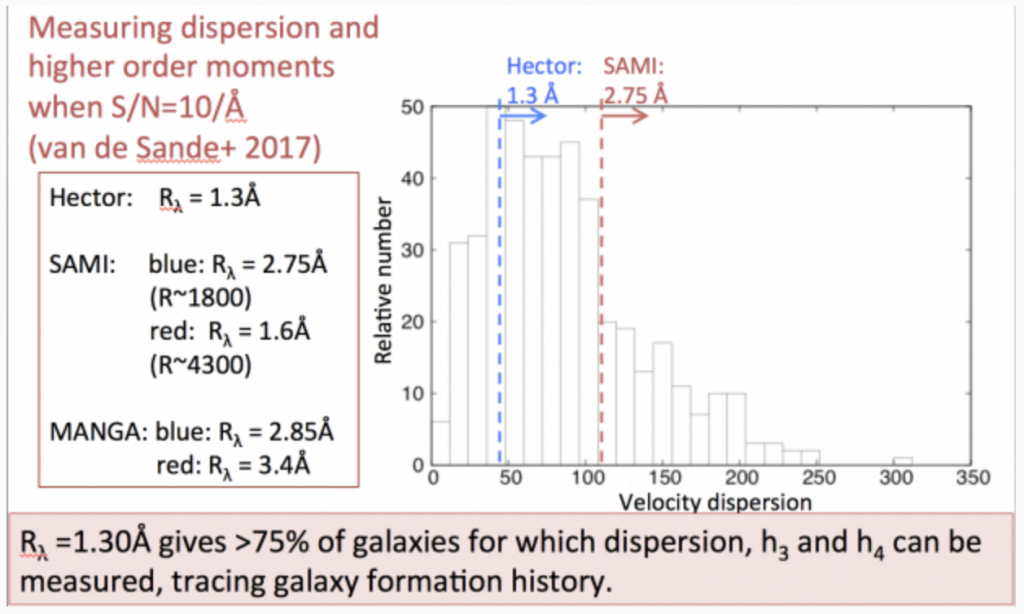Science Requirements
After extensive astronomical community consultation on the needs for Hector, the science case for the Hector Survey and the requirements for the instrument were defined.
The Science Requirements document outlining key science and the resulting instrument specifications for Hector can be found in the Hector Science Case Document.
The key niche for Hector is the combination of high spectral resolution and large survey size.
This allows unique science on stellar kinematics and deblending emission-lines that can only be done with this combination of specifications.
The stellar kinematics science case aims to measure higher order moments (h3, h4) to link the kinematic tracers to simulations of galaxy merger histories. This is a priority science case for Hector because Hector will be the only instrument in the world that can do this. The reasons are that the higher spectral resolution enables the h3 and h4 lines to be measured in 75% of our galaxies to S/N=10, whereas in SAMI, only ~26% of galaxies will accurately have these measures. For MaNGA it will be fewer still because the spectral resolution is not as good as SAMI and therefore Hector will be the only large galaxy survey capable of this science. The link between kinematics and galaxy merger history is unique, and is crucial to our understanding of galaxy evolution.
Spectral resolution comparison

Figure: The histogram shows the typical range of velocity dispersions for galaxies in the Hector Survey. The high spectral resolution of 1.3 Angstroms allows all galaxies to the right of the blue dashed line to have their higher order stellar kinematic components (h3 and h4) measured with a S/N=10/Angstrom. This can only be done for fewer galaxies in the SAMI survey (red dashed line) and even fewer in Manga, because the spectral resolution is lower. 75% of the 30,000 Hector galaxies will have measurable h3 and h4.
The high spectral resolution is a significant advantage for the emission line galaxy science because it will enable deblending of multiple line components. This will enable identification of winds and outflows, and separation of AGN processes at a level not previously possible with existing IFU surveys.
Science Papers
A list of the published science papers from the Hector Galaxy Survey can be found at this page.
